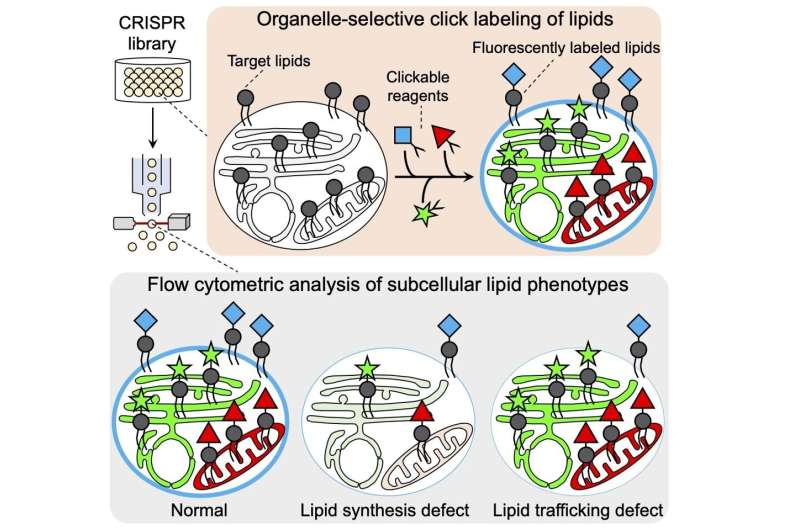This article has been reviewed according to Science X's editorial process and policies. Editors have highlighted the following attributes while ensuring the content's credibility:
fact-checked
peer-reviewed publication
proofread
Novel click chemistry technology for ultrafast analysis of intracellular lipids

Conventional analysis of cellular lipids mainly involves radiometric analysis and mass spectrometry of cell extracts collected in large quantities. This method is time-consuming and labor-intensive and burdensome when analyzing a large number of samples. The issue needs to be addressed to elucidate the relationship between 20,000 types of human genes and lipid metabolism.
In a new study, researchers from Kyoto University have developed O-ClickFC, a technology that converts the abundance and spatial distribution of lipids in living cells into simple fluorescent signal information and analyzes them at an ultra-high speed (10,000 cells per second). This is done using a unique click reaction that can label lipids with fluorescent dyes in living cells. By combining this technology with "genome editing," it is possible to select cells with abnormal lipid metabolism from a cell population with mutations in all human genes and identify the causative genes.
As a demonstrative experiment, the research group identified 49 genes important for the metabolism of phosphatidylcholine (PC), a major component of human lipids, and discovered many novel genes, including FLVCR1, in the process. From a thorough analysis, it was found that FLVCR1 played a role in the uptake of choline, a nutrient essential for normal bodily functions and human health. Furthermore, the researchers elucidated part of the pathogenesis mechanism in mutant FLVCR1, which causes hereditary neurological disease and loss of choline uptake.
The research is published in the journal Cell Metabolism.
It has become evident over the years that metabolic abnormalities are the source of diseases such as cancer, obesity, and diabetes. O-ClickFC may be thereby applied for the analysis of not only lipids but also various metabolites such as sugars and amino acids to identify the genetic factors that link pathogenesis and metabolic abnormalities, as well as the discovery of candidate molecules as therapeutic targets.
More information: Masaki Tsuchiya et al, Organelle-selective click labeling coupled with flow cytometry allows pooled CRISPR screening of genes involved in phosphatidylcholine metabolism, Cell Metabolism (2023). DOI: 10.1016/j.cmet.2023.02.014
Journal information: Cell Metabolism
Provided by Japan Science and Technology Agency





















